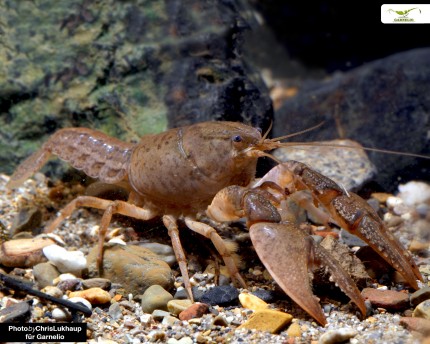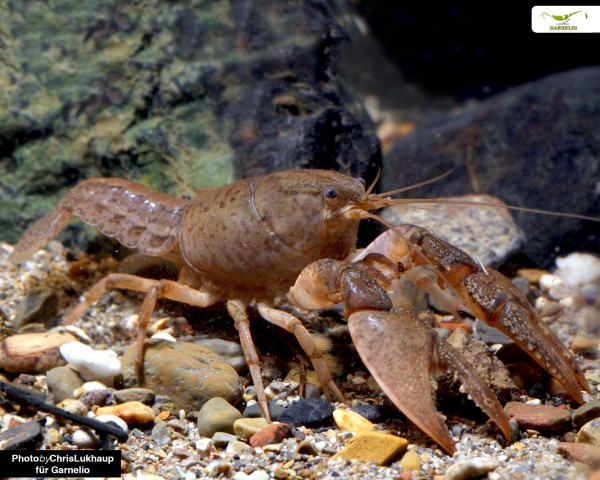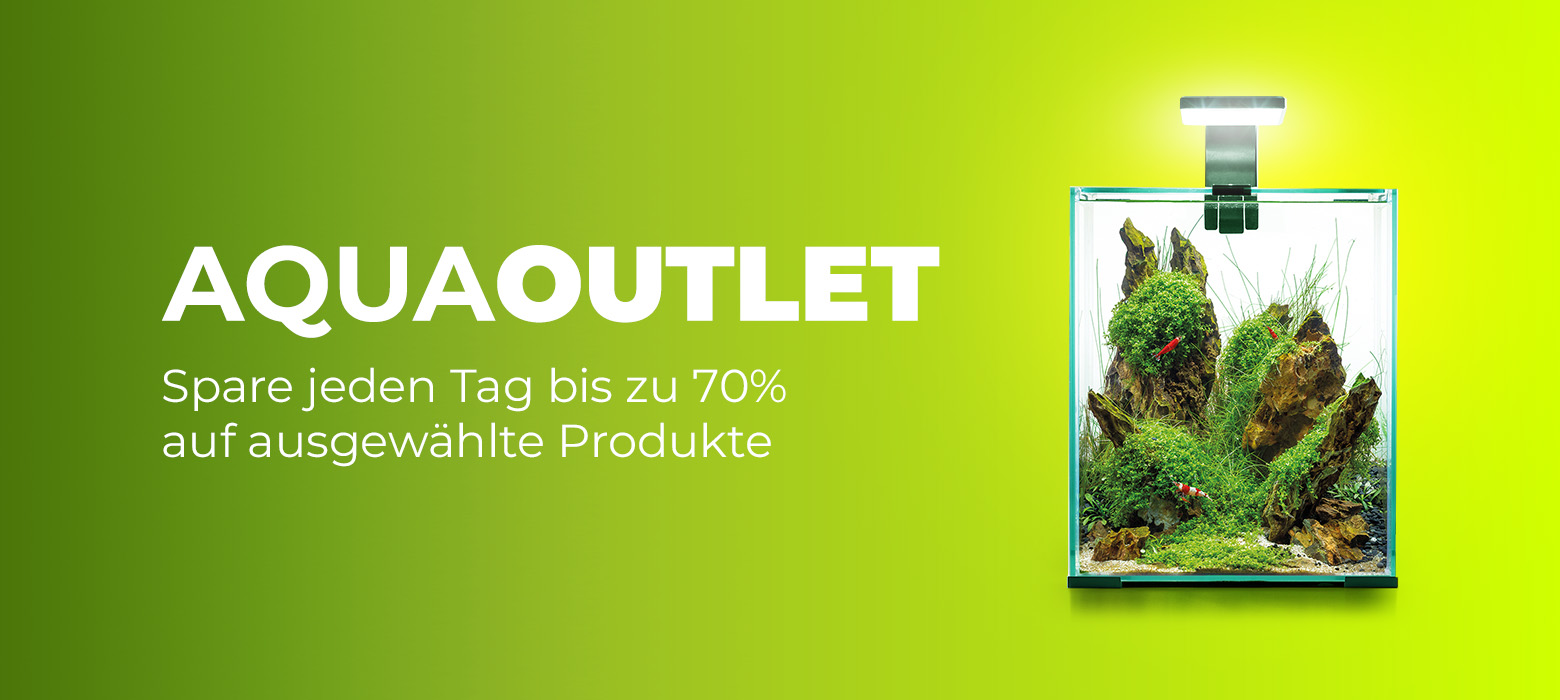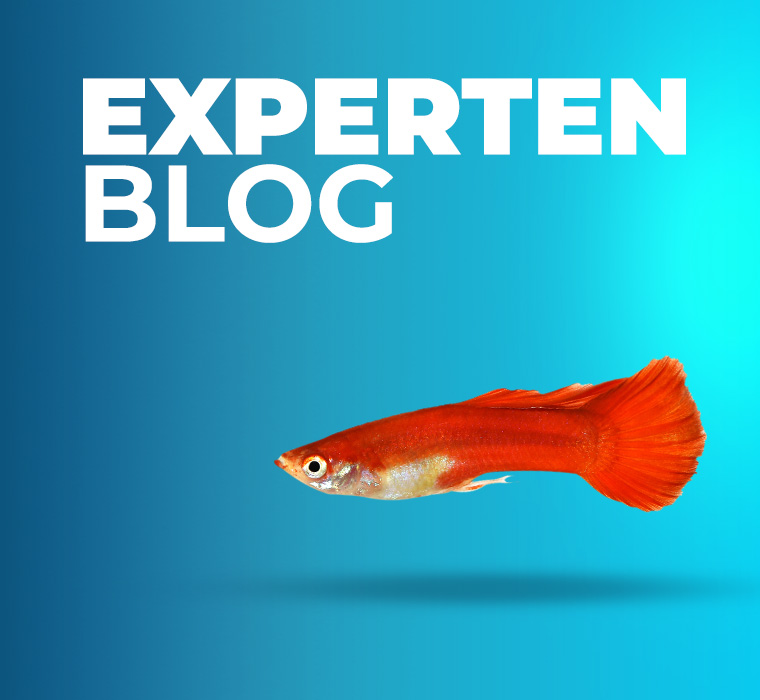- Item no: 8024
Fast delivery times
All products are in stock with us!14 years of breeding experience
Let our team of experts advise you!High customer satisfaction
from over 3,000 reviews "The burrowing crayfish Fallicambarus (Creaserinus) fodiens from the USA is a burrowing crayfish, but it can also be kept in the aquarium. In America it is very widespread, along the entire Gulf Coast from Texas to Florida, through Mississippi and Ohio, and north to the Great Lakes, where it is found as far north as Canada. It also occurs on the Atlantic coast, from Maryland to South Carolina.
In keeping with its rather subterranean lifestyle, this mole crab has remarkably small eyes and very large and powerful claws. It is quite variable in color and can take on many shades of brown from solid dark brown to light dark marbled. Usually there is a lighter broad dorsal stripe on the back. Fallicambarus fodiens is measured without claws only to about 9 cm. In the wild, the mole crab, also called Digger Crayfish in America, lives from January to May in surface waters, during the rest of the year it lives in burrows dug underground, reaching the water table. Here it raises the typical "chimneys" or chimneys, by which the crayfish burrows can be easily recognized. Usually the burrows have one exit to the surface and a second that leads into a nearby stream or ditch.
The males of this mole crab can be easily distinguished from the females. In the male Fallicambarus (Creaserinus) fodiens, one can see a V-shaped structure pointing forward between the posterior pairs of walking legs, the gonopods, formed by the anterior two pairs of swimming legs. Therefore, females always have five pairs of webbed legs under the abdomen, while males have only three.
The burrowing crab is reasonably tolerant of conspecifics, but really needs lots of hiding places in the aquarium. Caves and roots as well as stone structures are important. Since the crayfish are strong diggers, roots and stones in particular must not be undermined to prevent damage from tipping heavy aquarium decorations. In a very well structured aquarium from 80 cm edge length several specimens of Fallicambarus (Creaserinus) fodiens feel well.
Plants are dug out or eaten. Harder aquarium plants like Anubias or ferns attached to stones or roots have a better chance of survival. Floating plants also add greenery to the aquarium, but may be eaten. The lid of a crayfish aquarium for burrowing crayfish must close absolutely tight, and all gaps must be absolutely stuffed. These crayfish have a strong migratory instinct and would otherwise leave the water as they would in nature. The water temperature for the burrowing crayfish may be between 10 and 25 °C, cooling in winter is beneficial but not mandatory. The Grave Crab, on the other hand, is quite undemanding in terms of water hardness requirements. Please accustom your new aquarium inhabitants nevertheless over approx. 1 hour carefully to the new water values in the aquarium.
Fallicambarus (Creaserinus) fodiens is an omnivore that feeds mainly on foliage and dead plant parts, but will also eat freshly dead animals and will also indulge in the occasional worm or insect larvae. A good crayfish food for North American crayfish is a suitable food for mole crayfish in the aquarium, in addition to plenty of fall foliage. Burrowing crayfish juveniles need a more protein-rich diet, so they should be fed high-protein frozen foods, protein foods, or similar foods once or twice a week in addition to foliage and crayfish foods to keep cannibalism in the rearing tank in check.
Burrowing crayfish do not need a cold period before mating. They usually reproduce in late spring or early summer, and the females then set eggs in the fall. Approximately twice as many females as males occur per litter, a peculiarity of this crayfish species. Female Fallicambarus (Creaserinus) fodiens carry their eggs under the abdomen until hatching. For breeding, we recommend a separate rearing aquarium for the young burrows, which should have plenty of hiding places and a thick layer of autumn leaves on the bottom.
It is advantageous to associate the mole crabs with Malayan trumpet snails or with Neocaridina shrimps, because they keep the aquarium clean and take care of the leftovers, which are almost inevitable for Fallicambarus (Creaserinus) fodiens when eating. It is possible that the crayfish will certainly prey on a shrimp now and then, so robust species that reproduce well are better off here than very delicate animals. Small to medium sized peaceful fish that are more surface oriented and do not sleep on the bottom can also be well socialized with Fallicambarus (Creaserinus) fodiens if the water requirements are suitable. Snails are readily eaten.
Please never release aquarium crayfish outdoors! Fallicambarus (Creaserinus) fodiens from North America is a possible carrier of crayfish plague, which is fatal to all crayfish native to our area. Therefore, please do not keep the North American burrowing crayfish in the same aquarium as crayfish from other continents, they are also susceptible to this deadly disease.
Our food recommendation: Freshwater crayfish have a very varied diet in the wild. The Natureholic Crab Feed Sticks contain in a biologically balanced form only those ingredients that these crayfish in this or similar form to their natural food spectrum. This naturally supports and promotes moulting, growth and reproduction. Due to their protein content they are ideally suited for omnivorous crayfish of the genera Procambarus, Cambarus, Cambarellus, Astacus and the Cherax crayfish from Australia, which are basically omnivores that like to eat animal as well as vegetable food. The crayfish of the genus Cherax from Papua also like to eat a portion of animal food when they are young, but later they switch predominantly to plant food.
Our plant recommendation: Use for planting NatureHolic InVitros. These are free of snails, planarians and other unwanted co-inhabitants. Also free of algae spores, bacteria and fungi.
Expert Tip: We recommend for fish keeping the NatureHolic 3 Phase Liquid. The care set offers the best all-round protection for your animals. It ensures optimal conditions for successful breeding and keeping.
| Scientific name | Fallicambarus (Creaserinus) fodiens (Hagen, 1870) |
| German Name: | Digger Crayfish, Digger Crayfish |
| Difficulty level: | suitable for beginners |
| Origin/Distribution: | large parts of the U.S. and southern Canada |
| Coloration: | variable, shades of brown, often marbled, conspicuously broad dorsal stripe |
| Age expectancy | 2 to 3 years |
| Water parameters: | GH up to 20, KH up to 20, pH 4.5 to 8.5, temperature 10 to 25 °C |
| Tank size: | from 80 cm for one pair |
| Food | brown autumn leaves, Natureholic crayfish feed, frozen food, vegetables, green food (spinach, nettle), protein food, frozen food |
| Reproduction | easy, after three to six weeks the young crayfish hatch, which can be somewhat cannibalistic; lots of hiding places increase survival rate |
| Behavior | compatible |
| Socialization | with shrimp, with peaceful small to medium sized fish |
| Further information | Sex differences crayfish, shrimp, crayfish, snails & mussels feed properly, Cherax aquarium crayfish - keeping in the aquarium |
- Item no: 8024
- EAN No.: 7427061463705
Entdecke die Garnelio Welt!
Garnelio gehört zu den größten Onlineshops für wirbellose Aquarientiere weltweit.
Viele Artikel gibt es exklusiv nur bei uns im Shop.












